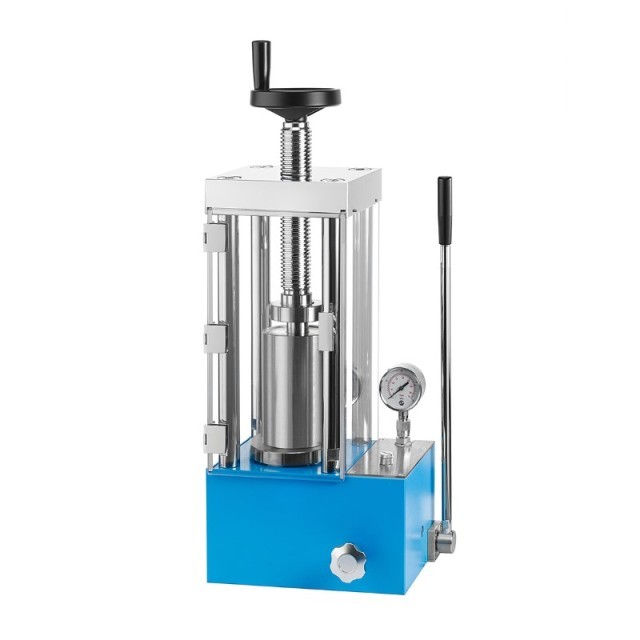
Cold Isostatic Press
Manual Cold Isostatic Pressing CIP Machine Pellet Press
Item Number : PCIM
Price varies based on specs and customizations
- Pressure Range
- 0-12T(0-17MPa)~0-60T(0-34MPa)
- Isostatic Pressure
- 0-300MPa
- Isostatic Pressure Chamber
- Φ22×70mm(M×N)~Φ50×150mm(M×N)
Shipping:
Contact us to get shipping details Enjoy On-time Dispatch Guarantee.
Why Choose Us
Reliable PartnerEasy ordering process, quality products, and dedicated support for your business success.
KINTEK Lab Manual Isostatic Press: Achieve Superior Sample Uniformity & Density
At KINTEK, we specialize in advanced lab press machines, including automatic lab presses, lab isostatic presses, and heated lab presses, designed to meet diverse laboratory needs. Our Lab Manual Isostatic Press is engineered for precision and efficiency in sample preparation, delivering high-quality, homogenous compacts.
See Our Press in Detail:
Product Visuals & Components
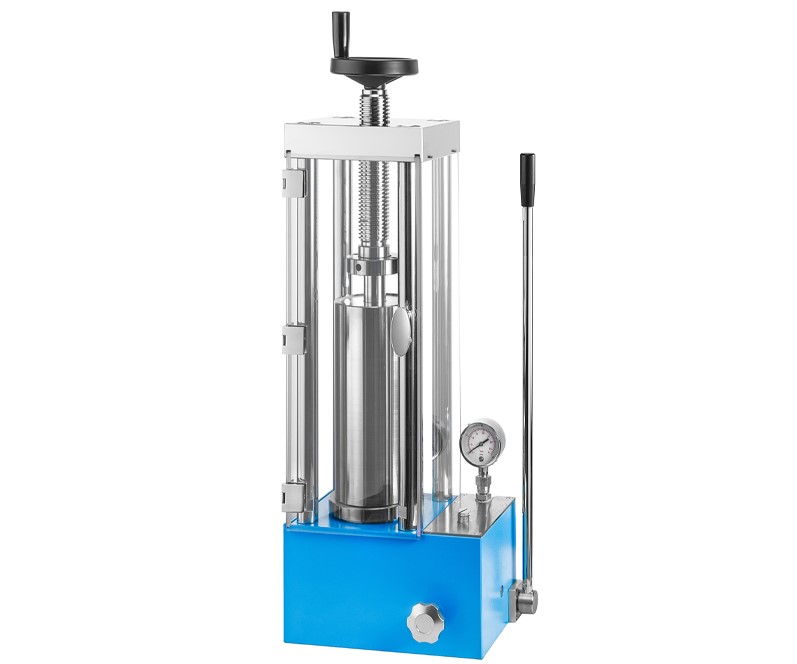
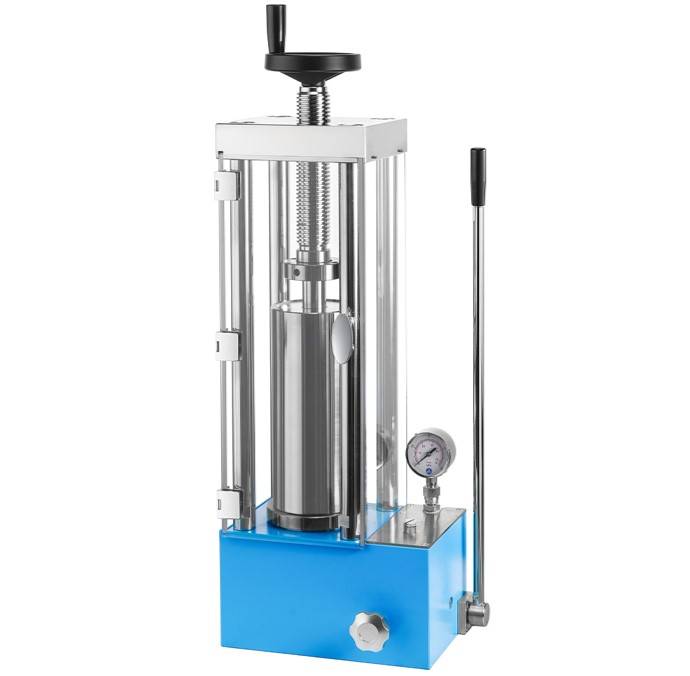
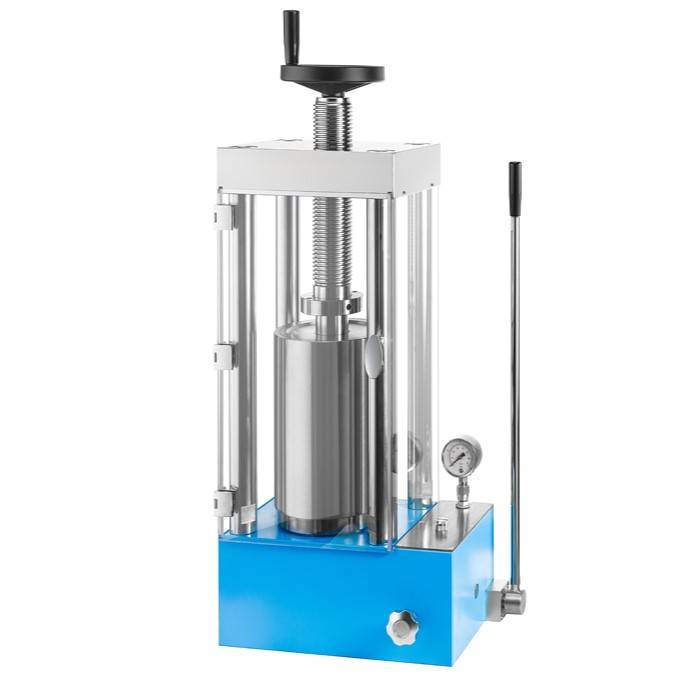

Mold & Operation Visuals
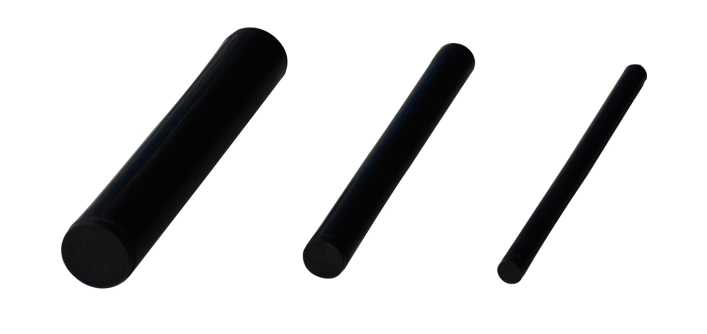
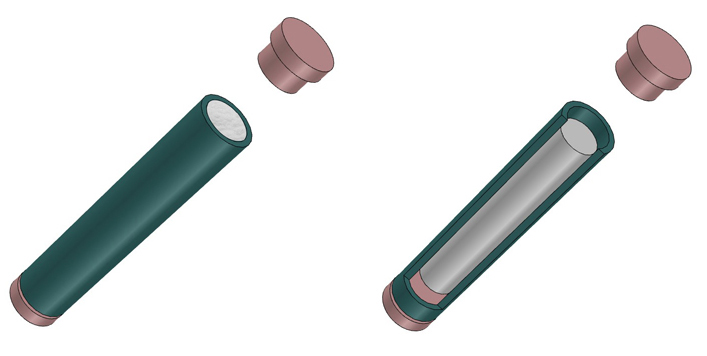
Ready to enhance your sample preparation? Contact us today to discuss your specific application and get a quote!
Why Choose KINTEK's Lab Manual Isostatic Press?
Isostatic pressing is a method for forming and densifying powders into a desired shape using a liquid medium to apply uniform pressure in all directions. Our manual isostatic presses offer precision control, making them ideal for researchers and labs with strict sample quality requirements. The resulting products are known for their high homogeneity, crucial for advanced materials.
Key Features & Benefits for Your Lab:
- Superior Sample Quality: Achieves high density and uniform compacts with minimal firing shrinkage, ensuring samples are not easily deformed. The isostatic process creates higher and even pressure around samples, significantly increasing sample density.
- Compact & Portable: Small footprint and light weight make it easy to carry, move, and perfectly suitable for use within a vacuum glove box for processing under vacuum environments.
- Cost-Effective Solution: Manual isostatic presses are generally less expensive than electric alternatives, providing a budget-friendly option for small-scale production, research, or prototyping.
- User-Friendly Operation: Designed for ease of use, requiring less training compared to electric presses.
- Precision Control: Manual pressure adjustment allows for greater control over the pressing process, enabling the production of parts with varying densities to meet specific requirements. Features a high-precision digital pressure gauge (0.01MPa accuracy) for accurate monitoring.
- Versatile Forming Capabilities: Capable of forming slender rod or tubular compacts that are challenging to produce using conventional pressure methods.
- Durable & Reliable Construction:
- Chrome-plated cylinder ensures a smooth surface, rust resistance, and good sealing with no oil leakage.
- One-piece main board structure integrates the oil pool, main board, and oil cylinder, eliminating seal connections for enhanced reliability.
- Extended pulling spring provides excellent rebound effect and resists deformation (cylinder can achieve 30mm return without deformation).
- All-aluminum alloy handwheel is beautiful, practical, and durable.
- Molds crafted from Japanese high-speed steel offer excellent material quality, high hardness, resistance to deformation, and long service life.
- Special plunger with a custom sealing structure ensures an excellent sealing effect.
- The pressurizing device is strategically placed for optimal leverage and stability.
- The oil pool is located outside the host for easy oil replacement and includes a hydraulic oil filtration device.
- The upper plate uses electroplated countersunk head hexagonal screws for a clean look and space-saving design.
Applications
Our Lab Manual Isostatic Press is an indispensable and highly efficient tool for sample preparation, widely utilized in:
- Material Researching Labs
- Pharmacy & Pharmaceutical Development
- Catalytic Reaction Studies
- Ceramics Industry
- Electronic Industries
- Production of advanced materials like hard alloys and rare earth permanent magnets.
Technical Specifications
| Instrument model | PCIM-12T | PCIM-20T | PCIM-40T | PCIM-60T |
|---|---|---|---|---|
| Pressure Range | 0-12T(0-17MPa) | 0-20T(0-21MPa) | 0-40T(0-30MPa) | 0-60T(0-34MPa) |
| Piston diameter | 95mm (d) in chrome plated oil cylinder | 110mm (d) in chrome plated oil cylinder | 130mm (d) in chrome plated oil cylinder | 150mm (d) in chrome plated oil cylinder |
| Pressure gage | Pressure and pressure dual scale display | Pressure and pressure dual scale display | Pressure and pressure dual scale display | Pressure and pressure dual scale display |
| Maximum piston stroke (T) | 40mm | 40mm | 50mm | 50mm |
| Guard | Organic glass | Organic glass | Organic glass | Organic glass |
| Ambienttemperature | 10℃-40℃ | 10℃-40℃ | 10℃-40℃ | 10℃-40℃ |
| lsostatic pressure | 0-300MPa | 0-300MPa | 0-300MPa | 0-300MPa |
| lsostatic pressure chamber | Φ22×70mm(M×N) | Φ30×120mm(M×N) | Φ40×150mm(M×N) | Φ50×150mm(M×N) |
| External dimensions | 305×195×530mm(L×W×H) | 305×195×600mm(L×W×H) | 355×215×710mm(L×W×H) | 405×240×720mm(L×W×H) |
| Equipment weight | 90Kg | 100Kg | 130Kg | 180Kg |
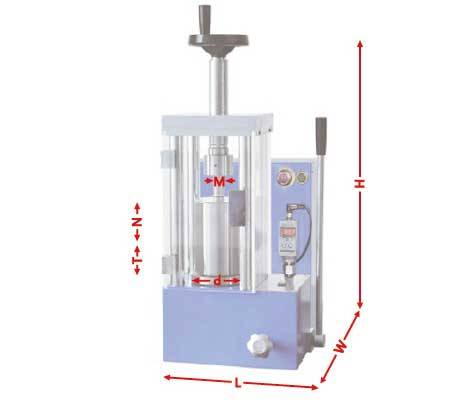
| Pressure conversion | ||
|---|---|---|
| Actual pressure | Chamber pressure | System pressure |
| 1.7 [Tons] | 1.86 [MPa] | 25 [MPa] |
| 3.5 [Tons] | 3.72 [MPa] | 50 [MPa] |
| 5 [Tons] | 5.57 [MPa] | 75 [MPa] |
| 7 [Tons] | 7.43 [MPa] | 100 [MPa] |
| 8.7 [Tons] | 9.29 [MPa] | 125 [MPa] |
| 10.5 [Tons] | 11.2 [MPa] | 150 [MPa] |
| 14 [Tons] | 14.8 [MPa] | 200 [MPa] |
| 17.5 [Tons] | 18.6 [MPa] | 250 [MPa] |
| 21 [Tons] | 22.3 [MPa] | 300 [MPa] |
| Reminder: Generally, the system pressure should not exceed 35MPa, otherwise it will affect the service life of the equipment. | ||
Operating Steps
The general operation of Lab Manual Isostatic Press is as follows:
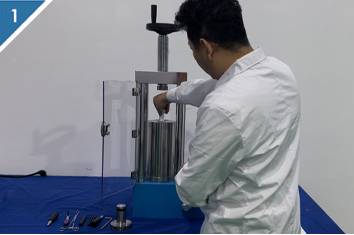
Step 1: Place the sample in the cavity.
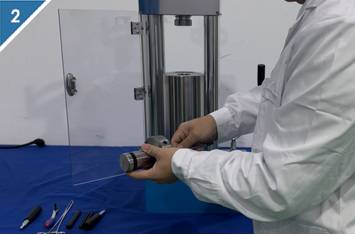
Step 2: Assemble and install the pressure rod.
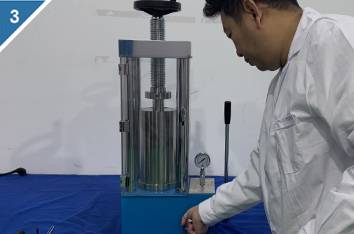
Step 3: Place the cavity in the tablet press and tighten the oil drain valve.
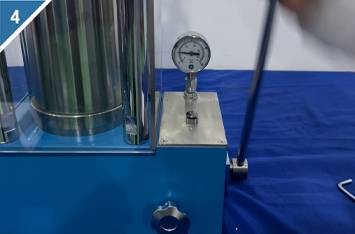
Step 4: Pressurize the chamber to the required pressure.
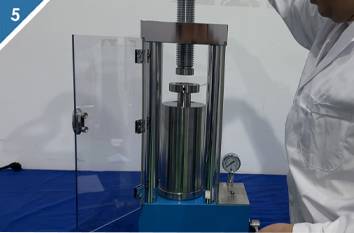
Step 5: Loosen the oil drain valve and remove the isostatic chamber.
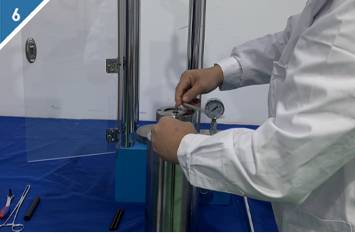
Step 6: Loosen the bleed screw of the chamber.
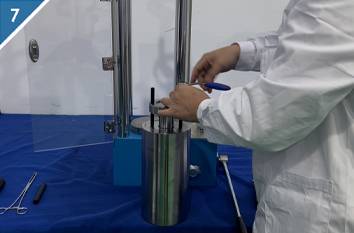
Step 7: Use the top screw to push out the isostatic pressure rod.
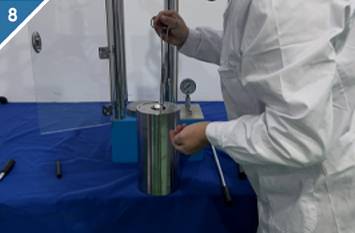
Step 8:Take out the pressed sample.
Partner with KINTEK for Your Lab Press Needs
Elevate your laboratory's capabilities with our reliable and precise Lab Manual Isostatic Press. For more information, detailed specifications, or to request a personalized quote, please reach out to our expert team.
Click here to fill out our contact form, and let us help you find the perfect lab press solution for your research!
Full range of types of laboratory press molds
We have a full range of molds for you to choose from, and the molds fit the body perfectly.
If you need molds with special shapes, we can also customize them for you.
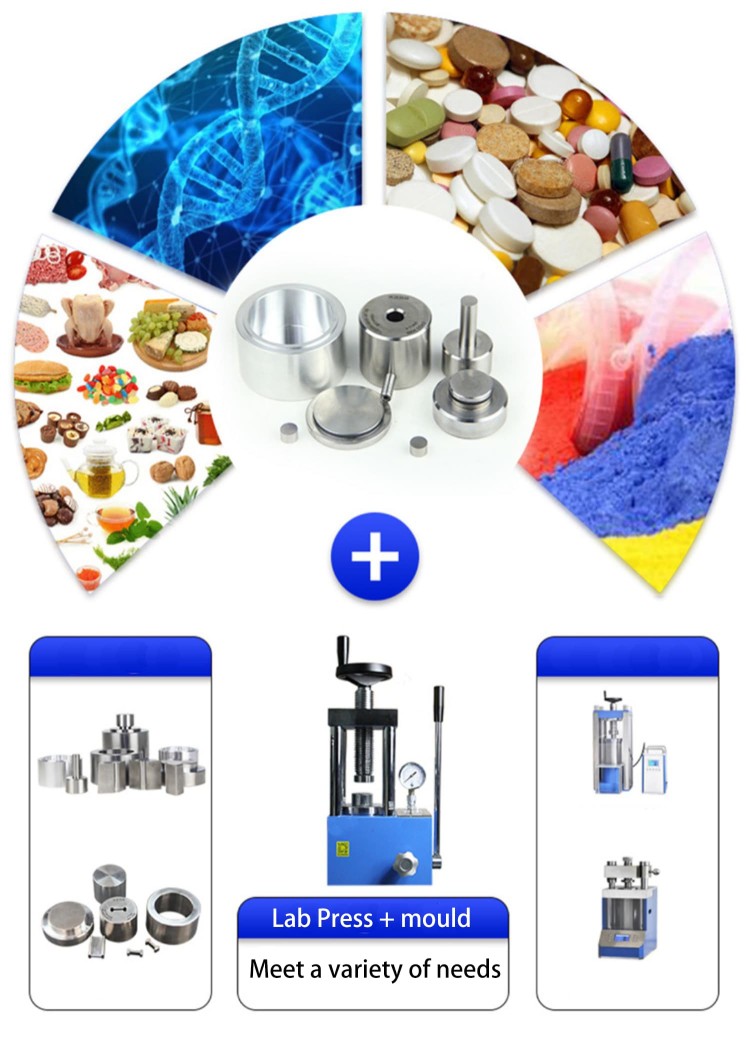
The Right Lab Press Awaits
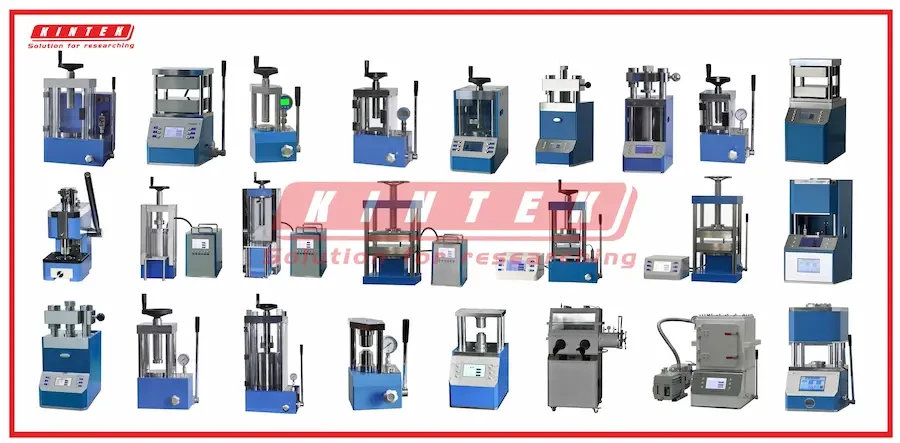
Expert Advice? We're Here. Get in Touch!
FAQ
What Is The Principle Of Cold Isostatic Press (CIP)?
What Are The Main Applications Of A Laboratory Pellet Press?
What Is An Isostatic Press?
What Are The Advantages Of Cold Isostatic Press (CIP)?
What Features Should I Consider When Choosing A Laboratory Pellet Press?
What Are The Main Types Of Isostatic Presses?
What Are The Applications Of Cold Isostatic Press (CIP)?
How Does A Laboratory Pellet Press Work?
How Does An Isostatic Press Work?
What Types Of Cold Isostatic Press (CIP) Machines Are Available?
What Are The Advantages Of Using A Laboratory Pellet Press?
What Are The Advantages Of Using An Isostatic Press?
How Does Cold Isostatic Press (CIP) Compare To Uniaxial Die Compaction?
What Types Of Laboratory Pellet Presses Are Available?
What Industries Use Isostatic Presses?
What Are The Applications Of Cold Isostatic Pressing (CIP)?
What Is The Difference Between CIP, WIP, And HIP?
Why Is Uniform Density Important In Isostatic Pressing?
4.8
out of
5
Incredible value for money! The quality is top-notch and it arrived faster than expected.
4.9
out of
5
This machine is a game-changer. The durability is impressive, and it's so easy to use!
4.7
out of
5
Love the precision of this press. It’s worth every penny and then some!
4.9
out of
5
Fast delivery and flawless performance. This is what technological advancement looks like!
4.8
out of
5
The build quality is exceptional. It’s clear this was designed to last.
4.9
out of
5
A brilliant investment. The speed and efficiency of this machine are unmatched.
4.7
out of
5
Superb craftsmanship! It’s reliable and delivers consistent results every time.
4.8
out of
5
The delivery was lightning fast, and the machine works like a dream. Highly recommend!
4.9
out of
5
Perfect for my needs. The technology behind this press is truly advanced.
4.8
out of
5
Outstanding performance and durability. It’s a must-have for any lab!
4.7
out of
5
Great product at a great price. The delivery was quicker than I anticipated.
4.9
out of
5
This press is built to last. The quality and precision are simply outstanding.
4.8
out of
5
Highly efficient and reliable. It’s clear a lot of thought went into its design.
4.7
out of
5
The machine arrived in perfect condition and works flawlessly. Very impressed!
4.9
out of
5
A fantastic piece of equipment. The speed and accuracy are beyond expectations.
4.8
out of
5
Excellent value and performance. It’s a sturdy machine that gets the job done.
4.7
out of
5
Quick delivery and superb quality. This press is a solid investment.
4.9
out of
5
The technology in this press is cutting-edge. It’s reliable and incredibly efficient.
REQUEST A QUOTE
Our professional team will reply to you within one business day. Please feel free to contact us!
Related Products
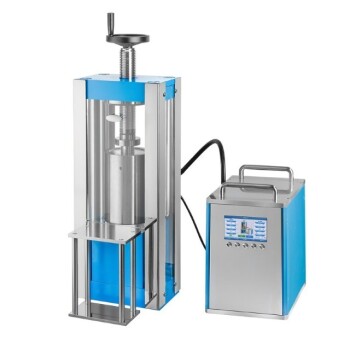
Electric Split Lab Cold Isostatic Pressing CIP Machine
KINTEK Lab Electric Cold Isostatic Press ensures precise sample preparation with uniform pressure. Ideal for material science, pharmaceuticals, and electronics. Explore models now!
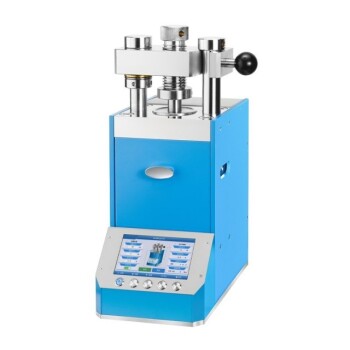
Automatic Lab Cold Isostatic Pressing CIP Machine
High-efficiency Automatic Cold Isostatic Press (CIP) for precise lab sample preparation. Uniform compaction, customizable models. Contact KINTEK experts today!
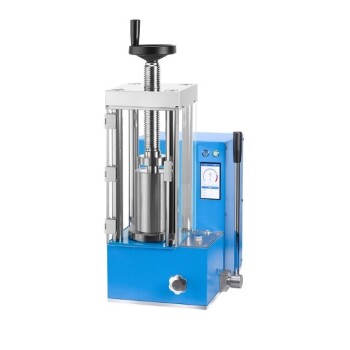
Electric Lab Cold Isostatic Press CIP Machine
KINTEK's Lab Electric Isostatic Cold Press delivers precision, efficiency, and superior sample quality for advanced research. Explore customizable models today!
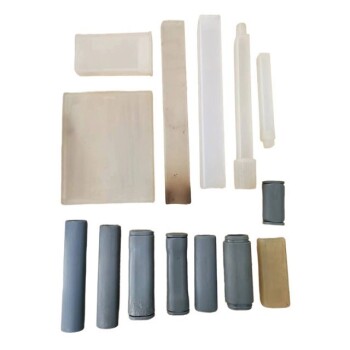
Lab Isostatic Pressing Molds for Isostatic Molding
High-quality isostatic pressing molds for lab presses - achieve uniform density, precision components, and advanced material research. Explore KINTEK's solutions now!

Laboratory Hydraulic Press 2T Lab Pellet Press for KBR FTIR
KINTEK 2T Lab Hydraulic Press for precise FTIR sample prep, durable KBr pellet creation, and versatile material testing. Ideal for research labs.
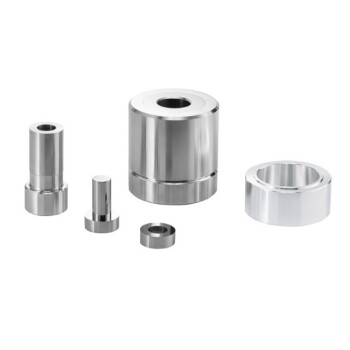
Lab Ring Press Mold for Sample Preparation
High-precision Ring Press Dies for uniform pellets in labs & industry. Durable Cr12MoV alloy, sizes Φ3-80mm. Boost efficiency & accuracy today!
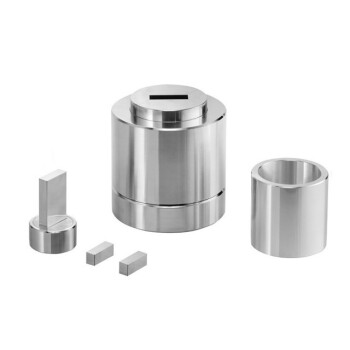
Assemble Square Lab Press Mold for Laboratory Use
KINTEK's Assemble Lab Press Mold ensures precise sample prep for delicate materials, preventing damage with quick-disassembly design. Ideal for thin strips & reliable demolding.
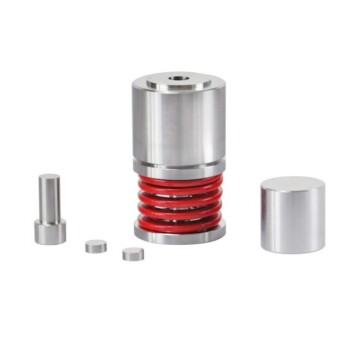
Lab Round Bidirectional Press Mold
Precision Round Bidirectional Press Mold for lab use, high-density compaction, Cr12MoV alloy steel. Ideal for powder metallurgy & ceramics.
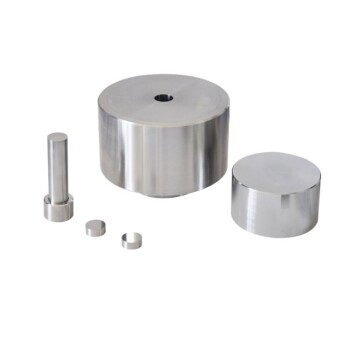
Precision Anti-Cracking Press Mold for lab use. Durable Cr12MoV steel, high-pressure resistant, customizable sizes. Ideal for material testing. Get yours now!
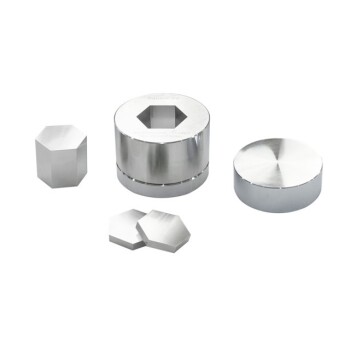
Precision Polygon Press Mold for metal powders & materials. Custom shapes, high-pressure compaction, durable design. Ideal for labs & manufacturing.
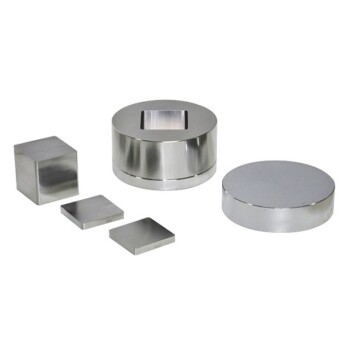
Square Lab Press Mold for Laboratory Use
KINTEK's Square Lab Press Molds create uniform strip samples with precision. Durable Cr12MoV steel, versatile sizes, ideal for lab applications. Enhance your sample prep today!

Laboratory Hydraulic Pellet Press for XRF KBR FTIR Lab Press
KINTEK Lab Press Machines: Precision hydraulic presses for sample prep. Automatic, heated, and isostatic models for research labs. Get expert advice now!

Manual Laboratory Hydraulic Press Lab Pellet Press
KINTEK's Protective Manual Lab Hydraulic Press ensures safe, precise sample preparation with durable construction, versatile applications, and advanced safety features. Ideal for labs.
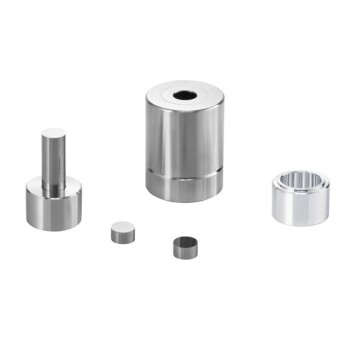
Carbide Lab Press Mold for Laboratory Sample Preparation
Premium carbide lab press molds for precise sample preparation. Durable, high-hardness YT15 material, customizable sizes. Ideal for XRF, battery research & more.

Laboratory Hydraulic Press Lab Pellet Press Button Battery Press
KINTEK Lab Press Machines: Precision hydraulic presses for material research, pharmacy, and electronics. Compact, durable, and low maintenance. Get expert advice today!

Laboratory Hydraulic Split Electric Lab Pellet Press
KINTEK Split Electric Lab Press: Precision sample preparation for research. Compact, versatile, with advanced pressure control. Ideal for material studies.

Automatic Laboratory Hydraulic Press for XRF and KBR Pellet Pressing
KinTek XRF Pellet Press: Automated sample prep for precise XRF/IR analysis. High-quality pellets, programmable pressure, durable design. Boost lab efficiency today!
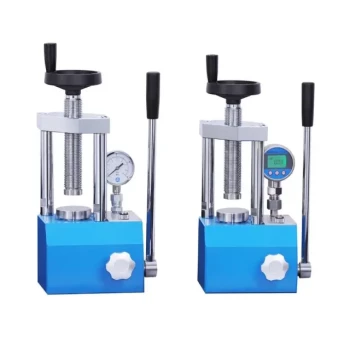
Manual Laboratory Hydraulic Pellet Press Lab Hydraulic Press
Boost lab efficiency with KINTEK's precision hydraulic presses—compact, leak-proof, and ideal for spectroscopy. Custom solutions available.

Laboratory Hydraulic Press Lab Pellet Press Machine for Glove Box
Precision lab press for glove boxes: Compact, leak-proof design with digital pressure control. Ideal for inert atmosphere material processing. Explore now!
Related Articles

How Isostatic Pressing Delivers Superior Performance in Critical Industries
Isostatic pressing enhances material density uniformity for aerospace, medical, and industrial applications, improving performance and reducing costs.

Why Your High-Performance Parts Are Failing—And How to Fix It at the Source
Struggling with inconsistent material strength? Discover why traditional pressing methods are the hidden culprit and how Cold Isostatic Pressing (CIP) creates superior, reliable parts.

How Warm Isostatic Pressing Optimizes Material Performance for Industrial Applications
Discover how Warm Isostatic Pressing (WIP) enhances ceramics, metals & composites with energy-efficient densification for medical, aerospace & automotive applications.

How Warm Isostatic Pressing Transforms High-Performance Manufacturing
Discover how Warm Isostatic Pressing (WIP) revolutionizes aerospace, automotive, and medical manufacturing with uniform density and high-temperature precision.